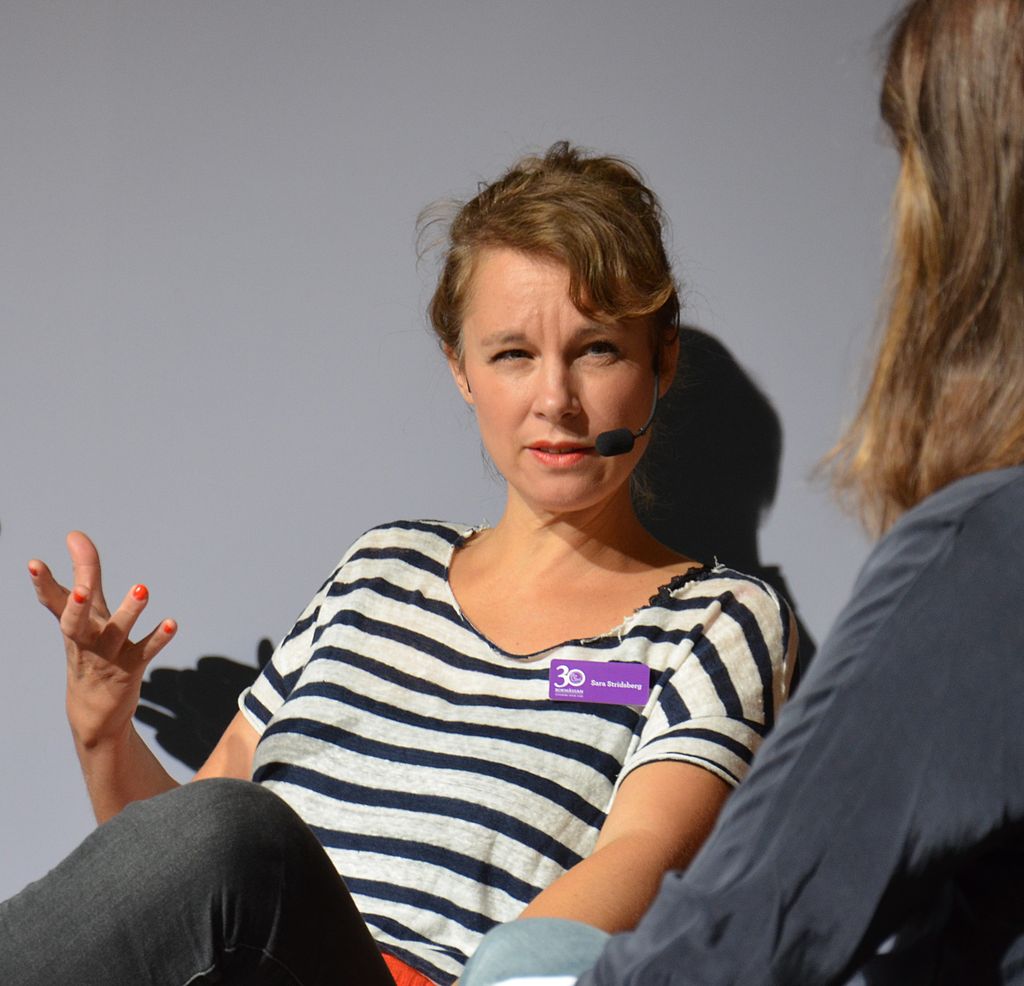Swedish author Sara Stridsberg’s novel The Gravity of Love (2014), which received the EU prize for literature, really is a book to remember. The novel’s title in the original is Beckomberga – Ode till min familj (Beckomberga – Ode to my Family), referencing a famous Swedish soul asylum. Stridsberg has undoubtedly secured her name amongst the best in contemporary Swedish literature. This novel also brought the author the August prize nomination. Owing to her resignation from the Swedish Academy over the Jean-Claude Arnault scandal, the Nobel Prize for literature could not be awarded in 2018, as the Academy did not comprise the required 18 members. Stridsberg obviously is a writer with strong opinions, and her words carry weight both on paper and elsewhere.
The Gravity of Love begins with the suicide of Beckomberga’s last patient Olaf. The first pages immediately generate strong links to books and films with similar themes: Einar már Gudmundsson’s astonishing Angels of the Universe, and its film version, The Million Dollar Hotel by Wim Wenders, and Princess by Arto Halonen. Cuckoo’s nests and other classic insane asylum-related literary (and cinematic) tropes come to mind later, but they do not linger. Indeed, the book evokes films, mostly – the novel of flashbacks is somewhat cinematic, but just the right amount. This kind of restrained dosing seems to be a lost art among today’s bestsellers.
Initially one wonders whether the slightly clichéd opening will stand up to the considerable competition out there. After a dozen pages this doubt disappears.
The topic of the story is fundamentally simple: human relations. A daughter’s relationship with her alcoholic father, accompanied by various supporting characters. The constant struggle between loneliness and relationships. In addition, there is the daughter’s desire to save her father, ‘It’s as though I truly believed my gaze could protect them, that I could swaddle them in my blessing and protect them from approaching darkness, from the clouds gathering on the horizon [—].’ An array of people who have ended up in Beckomberga for different reasons – alcoholics, murderers, lunatics, doctors – ultimately find themselves more at home there than anywhere else. Even Jackie, the daughter, who spends more and more time in the asylum, visiting her father after his suicide attempt, discovers a new world there; there she becomes an adult, ‘Sometimes I feel I grew up in this hospital,’ she reminisces later.
The Beckomberga complex is one of the main characters in the book. In old pictures, its grandiosity is awe-inspiring. It used to be Europe’s largest soul asylum. ‘I have sometimes thought that the Beckomberga period coincided with the welfare state era, 1932-1995,’ ponders the protagonist. The author uses few words to describe the evolution and essence of a typical soul asylum of the Nordic countries, and sketches the silent decline of a building complex that shaped thousands of lives.
The novel is also gently punctuated by political intimations, for example the murder of Olof Palme, who is visiting his mother in the asylum. But perhaps we can draw deeper generalisations, ‘Europe is deteriorating, the grandiose Europe is becoming the world’s back yard,’ Jim says gloomily, and it is possible by Europe he means himself.
This is not simply a nice story about a soul asylum and its patients and their sombre-joyful adventures, like some of the aforementioned novels or films. A physician’s hand on a teenage girl’s shoulder blade, a weeping wife killer inside the same teenager, human ruins unable to tolerate life outside the walls, unsuccessful love stories – there is an eerie backdrop to all this, and it refuses to disappear for a while after reading. ‘Without women and alcohol, without the flaming sexual inferno inside, there are just ashes, an aged body in an oversized suit, without future, without hope. Like a salamander whooshing through air in summer, a small vibrating flexible body, gleaming with water and full of life, shrinking with the arrival of the frosty winter.’ Hospitalisation may last a short while instead of a lifetime, but its impact on one’s later life is irreversible. ‘They say that former patients still visit Beckomberga, stand under the trees in the park, their palms on the sunburnt façade, as if the hospital’s heart is still beating inside [—].’
It is difficult to get into the protagonist’s life at first – finding connections between various flashbacks is tricky, but in time the pieces of the puzzle find their slots. On the second reading it becomes obvious just how well composed is the world the author has created. Even the pages that seemed clichéd at first now do not. The inevitable question about the author’s relationship with the novel raises its head – does the intriguing tale lead back to her? But curiosity killed the cat – let the secrets and tension lie.
Conclusions, generalisations? We are still living in a dualistic world, where people are either bad or good, crazy or sane, it is hard to acknowledge anything in between. When healthcare and social politics keep hitting the wall trying to deal with people – preferring to isolate, or push aside – then literature is the way towards understanding that all these heavens and hells lie within all of us. A fit of rage can destroy a life, the first shot can lead to a never-ending binge, love grows even behind bars. The shadow catches up to you and bites the harder the more you have tried to live in the light. The Gravity of Love offers a lot to think about along these lines and perhaps even encourages engagement with a few taboo subjects.
See more about the European Union Prize for Literature:
http://www.euprizeliterature.eu/

